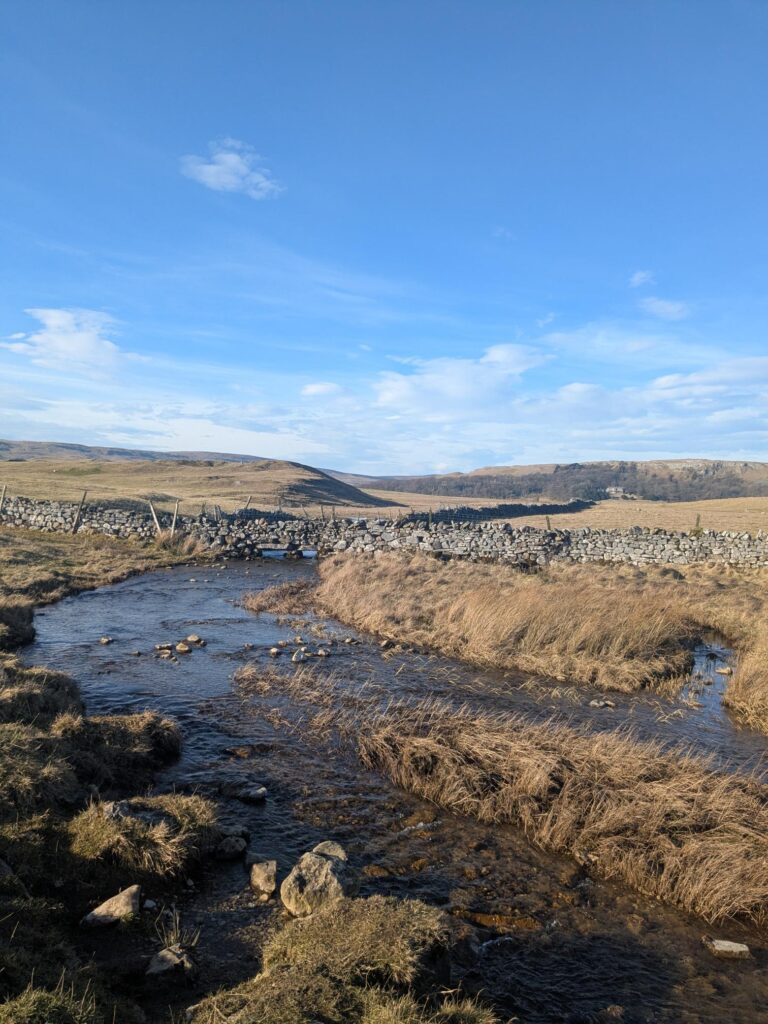This week I attended a walk and talk facilitated group in the Yorkshire Dales. Time to unpick challenges and work through the next 12 months.
My word of the trip in relation to work was “frustrated”. Time to take action.

Transformation: making a ruckus
A place to post notes that may be seed for a future post.
This week I attended a walk and talk facilitated group in the Yorkshire Dales. Time to unpick challenges and work through the next 12 months.
My word of the trip in relation to work was “frustrated”. Time to take action.

We want to be successful. One of the aims to achieve success is to know our individual fans/users/customers better. Knowing their needs allows us to design and run better services. A good service is an effective service. From the many anonymous interactions we have every day, we want to shine light on those touchpoints to know as many of them as we can.
Instead of just using generic terms like “total visitors to site (online and in-person), website visits per quarter, google review score, Spend per head etc there is an opportunity to be better informed. With better insights we can make data-informed decisions that don’t treat everyone identically the same. Kevin Kelly wrote about the benefits of having 1000 true fans which in summary says within any large group of people are die hard fans who give you momentum (MVP adjacent).
Find them by building services that allow you to identify who they are across your services (opt-in of course). Use their data test assumptions about how our worldviews collide. Spot something that doesn’t work and fix it. Fix it for the fans and you’ll probably be fixing it for everyone.
I like reading. Every year I keep a list of “books” I read or listen to. Check out my previous years too.
I get asked a lot how I got to become Co-CEO. On the things I can control, I say it’s because I stay curious.
At 16 during my first job at Burger King I wanted to find out how a BK makes money and the manager showed me. Years later that understanding is something I often replay.
I am curious about other people’s life’s, jobs and interests. Often to discover I am not personally interested about what their interested in and vice versa. Being curious doesn’t mean you have to love the topic. Learn just enough to file it away for a future moment.
Most recently I was curious about how train tracks work, remembering how fibre optics work, key moments in art history, Nick from British museum Wikipedia entry and child poverty.
Wikipedia is a great place to start. Followed by YouTube, podcasts, interviews, books and good old fashioned getting in touch.
im curious about what I’ll be curious about next.
..Easy to understand difficult to do.
Quote by Nate Regier in Compassionate Accountability
I was thinking today, what do I think about X? I turned thinking into overthinking and concluded that sometimes I’m not ready to give my opinion. I haven’t thought enough about it, I don’t have expertise in said area or just don’t even care enough to dig deeper.
I’m going to try and simply say to my inner self “I don’t have an opinion”.
ah much better.
When something needs doing it is easy to insist it is done the way you know. Which spins into saying to a teammate “don’t worry I’ll do it myself”. They lose agency and you end up doing something they could have done by them and you did that other important thing.
Next time you hear yourself saying “I’ll do it myself” try to catch yourself and see what happen.
In my career to date I have always had a slight (common?) distrust of those higher up in the organisation. Trust on a personal level is gained through interactions, Rarely do most people in a workforce get to know the boss. I have heard all sorts of rumours of things that I am alleged to have said that I didn’t. Or someone will have second-guessed something I did and assumed a different thing. Our worldviews may be different and the sum of “assuming or guessing” can make gaining high levels of trust a problem.
Knowing this has made me really think how I can reduce this problem. When I started 16 months ago I regularly shared a slide which showed a graphic of a battery that was half charged with 2 of 4 bars. Enter the Trust battery. Tobi Lütke who is Shopify CEO has talked about the concept that when you start a new role people probably trust you about 50%. With each interaction you either charge or discharge the trust battery.
So over a year into my role I recently had a moment where someone really took a leap to trust me. Yah. But that being said mostly people I feel are at 50%. One of my objectives this year is to see if I can get more people in the higher side of the battery than the lower side.
How?
By doing what I say i’ll do and showing through actions and transparency. Doing but then not sharing is def one piece of the puzzle as unless folk see/hear actions they can be left unsure and that battery fails just a drop more.
Should you listen to advice from others? My answer would be that you should always “consider” other people’s advice if you are stuck and you have asked!
The actual answer to your specific question is nearly always “it depends”.
It depends on XYZ with a smearing of your own context. so having advice from others will let you think differently and maybe come up with a more informed position. Because if you already knew the answer you wouldn’t be asking.
Last year I managed to read 11 books. I’d like to get 12-15 this year